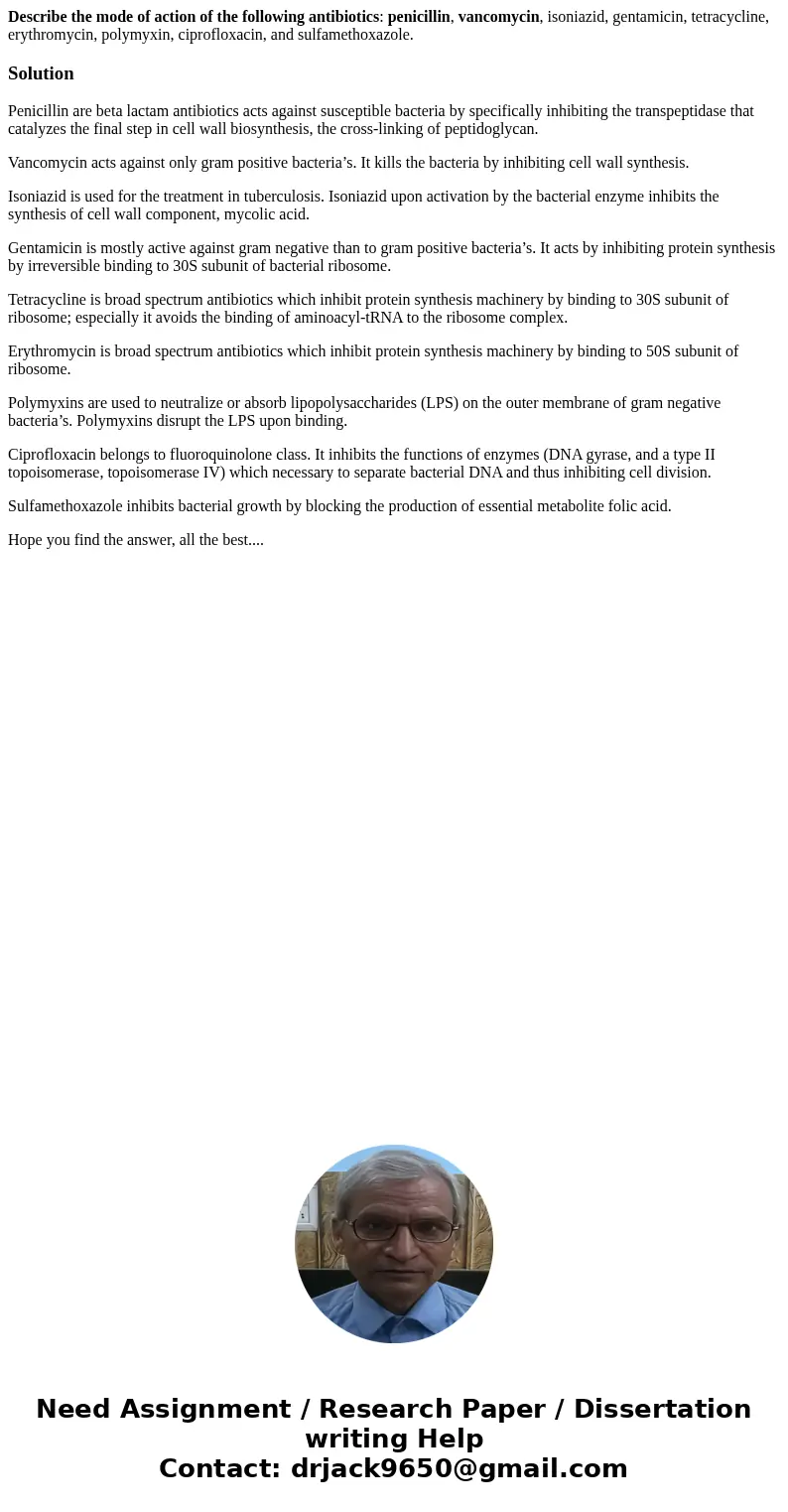Describe the mode of action of the following antibiotics pen
Describe the mode of action of the following antibiotics: penicillin, vancomycin, isoniazid, gentamicin, tetracycline, erythromycin, polymyxin, ciprofloxacin, and sulfamethoxazole.
Solution
Penicillin are beta lactam antibiotics acts against susceptible bacteria by specifically inhibiting the transpeptidase that catalyzes the final step in cell wall biosynthesis, the cross-linking of peptidoglycan.
Vancomycin acts against only gram positive bacteria’s. It kills the bacteria by inhibiting cell wall synthesis.
Isoniazid is used for the treatment in tuberculosis. Isoniazid upon activation by the bacterial enzyme inhibits the synthesis of cell wall component, mycolic acid.
Gentamicin is mostly active against gram negative than to gram positive bacteria’s. It acts by inhibiting protein synthesis by irreversible binding to 30S subunit of bacterial ribosome.
Tetracycline is broad spectrum antibiotics which inhibit protein synthesis machinery by binding to 30S subunit of ribosome; especially it avoids the binding of aminoacyl-tRNA to the ribosome complex.
Erythromycin is broad spectrum antibiotics which inhibit protein synthesis machinery by binding to 50S subunit of ribosome.
Polymyxins are used to neutralize or absorb lipopolysaccharides (LPS) on the outer membrane of gram negative bacteria’s. Polymyxins disrupt the LPS upon binding.
Ciprofloxacin belongs to fluoroquinolone class. It inhibits the functions of enzymes (DNA gyrase, and a type II topoisomerase, topoisomerase IV) which necessary to separate bacterial DNA and thus inhibiting cell division.
Sulfamethoxazole inhibits bacterial growth by blocking the production of essential metabolite folic acid.
Hope you find the answer, all the best....

 Homework Sourse
Homework Sourse